| View previous topic :: View next topic |
| Author |
Message |
devinw


Joined: 19 Aug 2016
Posts: 207
Location: Portland, OR
|
 Posted: Tue Oct 25, 2016 8:50 pm Post subject: MC Rokkor-SI 28mm f/2.5 "radioactive" repair attem Posted: Tue Oct 25, 2016 8:50 pm Post subject: MC Rokkor-SI 28mm f/2.5 "radioactive" repair attem |
 |
|
devinw wrote:
I got this lens for only $20 and it's super clean except it has the classic yellowing that can happen with one or more of the elements which are doped with Thallium. I've heard of people exposing the whole lens to UV light to clear it up, but I decided I'd go ahead and just take all the elements out and try to expose them to a high power UV lamp we have at my work.
Here's the lens. See the yellowing!:

Rearmost element removed... Little/no yellowing:

Front element. No yellowing:
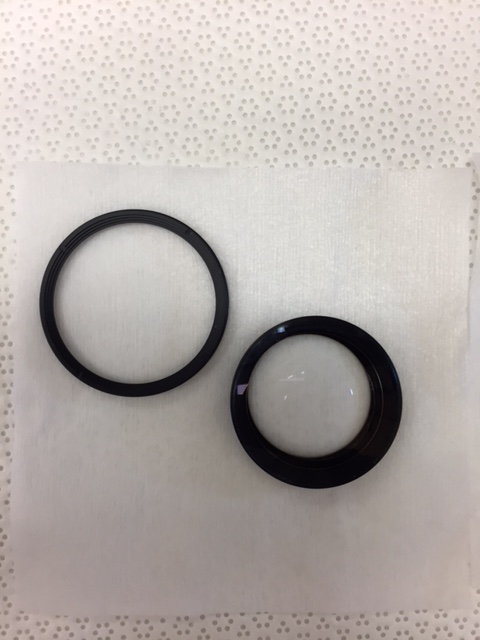
Left: Inner lens cell #1. This clearly contains the yellowed element. Right: Inner lens cell #2 (includes aperture assembly):
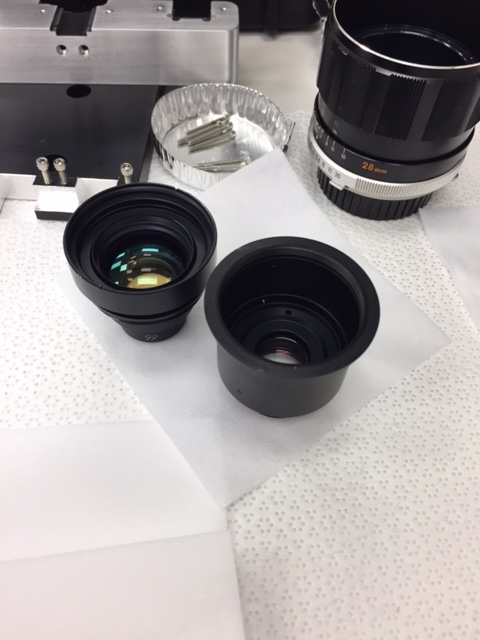
This inner lens cell contains 2 elements. 1 is removeable, the other appears to have the retaining ring potted in place:
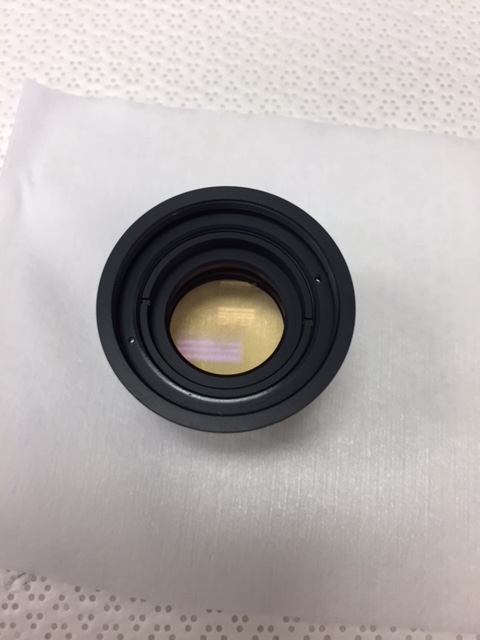
And here we have the culprit! It appears to be a doublet. I hope that the information online about the doped optics yellowing is not incorrect and that we don't have a cemented doublet in which the cement has yellowed. If this is the case, I fear nothing can be done:
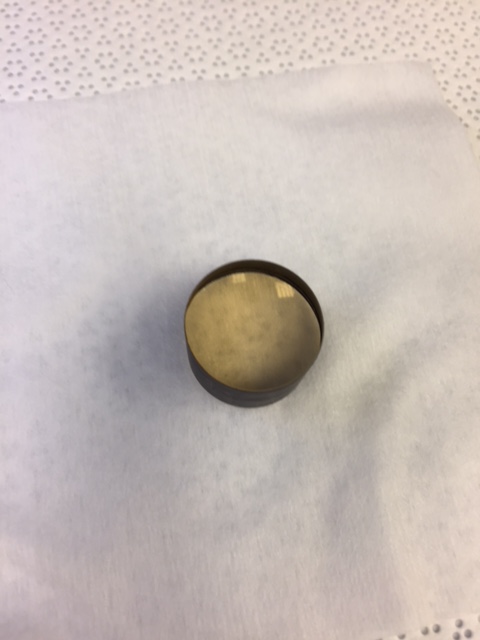
Next up I will try to treat the yellow element with a chamber which we had constructed for Ozone cleaning, as it has a wide UV spectrum. I tried the UV Arc lamp for 240 seconds and didn't see any change, but it has a fairly narrow wavelength band (it is for UV curing adhesives).
I'll report back if I make any progress, and reassemble!

_________________
Camera: Sony a6300
E-Mount: Zeiss/Sony 16-70 f/4, Samyang 12mm f/2
Rokkor: MD PG 50mm f1.4, MD 100mm Macro f3.5, MD 135mm f2.8, MD Zoom 35-70mm f3.5, MD Zoom 75-150 f4
Canon FD: nFD 50mm f1.4, Tokina AT-X 100-300mm f4
My Flickr: https://www.flickr.com/photos/westonde/
|
|
| Back to top |
|
 |
devinw


Joined: 19 Aug 2016
Posts: 207
Location: Portland, OR
|
 Posted: Wed Oct 26, 2016 12:11 am Post subject: Posted: Wed Oct 26, 2016 12:11 am Post subject: |
 |
|
devinw wrote:
Success! I went back to the UV lamp and hit it for longer and it finally cleared up. After about 10 minutes of exposure, I noticed what appeared to be a spiderlike pattern in the outer edge of the adhesive in the cemented doublet, so I stopped. I'd say the lens is probably 85% clearer than it was, but I couldn't go any more and risk it.
I also had to clean a few surfaces of some of the elements due to them having quite a bit of what appeared to be lubrication film (common on old lenses). I used optics grade Methanol and clean swabs and blew them off with a deionizing air gun.
UV lighting the yellowed lens:
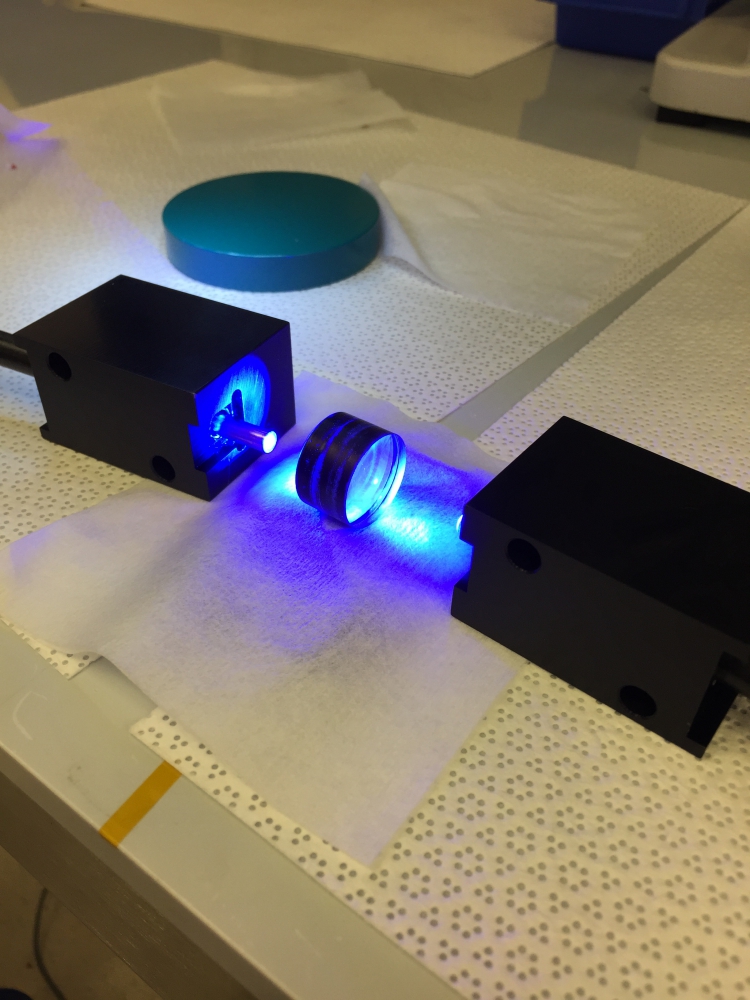
The improved lens:

And all put back together!:

And a couple of quick snaps with it. It's quite sharp!:

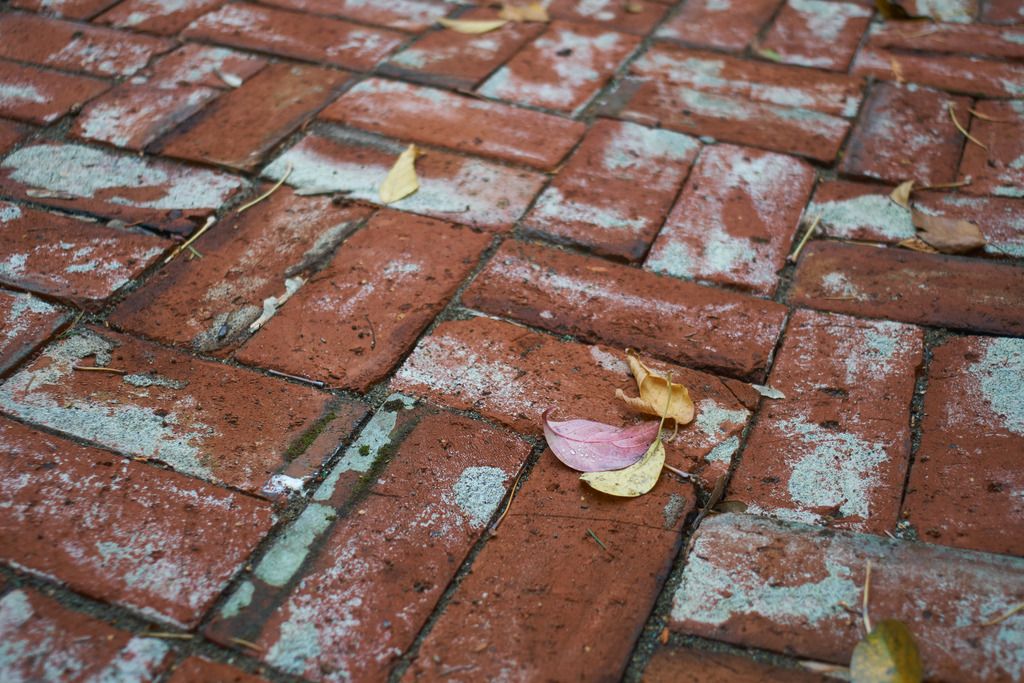
[/img]
_________________
Camera: Sony a6300
E-Mount: Zeiss/Sony 16-70 f/4, Samyang 12mm f/2
Rokkor: MD PG 50mm f1.4, MD 100mm Macro f3.5, MD 135mm f2.8, MD Zoom 35-70mm f3.5, MD Zoom 75-150 f4
Canon FD: nFD 50mm f1.4, Tokina AT-X 100-300mm f4
My Flickr: https://www.flickr.com/photos/westonde/
|
|
| Back to top |
|
 |
miran


Joined: 01 Aug 2012
Posts: 1364
Location: Slovenia
|
 Posted: Wed Oct 26, 2016 5:12 am Post subject: Posted: Wed Oct 26, 2016 5:12 am Post subject: |
 |
|
miran wrote:
Congratulations! Job well done.  Lens looks good. Lens looks good. 
_________________
my flickr stream |
|
| Back to top |
|
 |
memetph

Joined: 01 Dec 2013
Posts: 942
Location: Poland
|
 Posted: Wed Oct 26, 2016 5:27 am Post subject: Posted: Wed Oct 26, 2016 5:27 am Post subject: |
 |
|
memetph wrote:
Congrats and thank you very much . I have this lens and I have tried already a UV treatment without success . So I use it as it is , loosing 0.7 ev and adjusting the WB . Now I know what I have to do.
Thanks from Poland to Portland !! |
|
| Back to top |
|
 |
Teemō

Joined: 07 Apr 2016
Posts: 586
Location: Australia
|
 Posted: Wed Oct 26, 2016 5:42 am Post subject: Posted: Wed Oct 26, 2016 5:42 am Post subject: |
 |
|
Teemō wrote:
It does appear to be the glass that yellows rather than the cement, though I believe both can occur. I don't believe the mechanism for the yellowing is specifically understood, but supposedly caused by disruption of chemical bonds (between the different materials in the glass?) as a result of gamma ray emission and decay of the radioactive products within the glass. |
|
| Back to top |
|
 |
devinw


Joined: 19 Aug 2016
Posts: 207
Location: Portland, OR
|
 Posted: Wed Oct 26, 2016 5:19 pm Post subject: Posted: Wed Oct 26, 2016 5:19 pm Post subject: |
 |
|
devinw wrote:
| Teemō wrote: |
| It does appear to be the glass that yellows rather than the cement, though I believe both can occur. I don't believe the mechanism for the yellowing is specifically understood, but supposedly caused by disruption of chemical bonds (between the different materials in the glass?) as a result of gamma ray emission and decay of the radioactive products within the glass. |
Yeah, I definitely agree the mechanism is in the glass, since I was able to "undo" most of it with the UV high power light. Adhesives do not behave this way. I am glad I caught the process of the doublet cement beginning to fail at the edges though. It would appear that with too much high power UV, it will start to break down.
_________________
Camera: Sony a6300
E-Mount: Zeiss/Sony 16-70 f/4, Samyang 12mm f/2
Rokkor: MD PG 50mm f1.4, MD 100mm Macro f3.5, MD 135mm f2.8, MD Zoom 35-70mm f3.5, MD Zoom 75-150 f4
Canon FD: nFD 50mm f1.4, Tokina AT-X 100-300mm f4
My Flickr: https://www.flickr.com/photos/westonde/
|
|
| Back to top |
|
 |
devinw


Joined: 19 Aug 2016
Posts: 207
Location: Portland, OR
|
 Posted: Wed Oct 26, 2016 5:21 pm Post subject: Posted: Wed Oct 26, 2016 5:21 pm Post subject: |
 |
|
devinw wrote:
| memetph wrote: |
Congrats and thank you very much . I have this lens and I have tried already a UV treatment without success . So I use it as it is , loosing 0.7 ev and adjusting the WB . Now I know what I have to do.
Thanks from Poland to Portland !! |
No problem! It's actually not terribly hard to take apart. I had the luxury of doing it in a clean room, but with gloves and care, you could do it at home. You just need an adjustable spanner wrench like this:
https://www.thorlabs.com/thorproduct.cfm?partnumber=SPW801
to do all the various size rings.
I used this lamp for the UV:
http://www.excelitas.com/Pages/Product/Omnicure-S2000.aspx
It is quite powerful at 40Watt/Cm^2.
BTW, I have a lot of Polish in my family.. Probably just about 50% of my blood! 
_________________
Camera: Sony a6300
E-Mount: Zeiss/Sony 16-70 f/4, Samyang 12mm f/2
Rokkor: MD PG 50mm f1.4, MD 100mm Macro f3.5, MD 135mm f2.8, MD Zoom 35-70mm f3.5, MD Zoom 75-150 f4
Canon FD: nFD 50mm f1.4, Tokina AT-X 100-300mm f4
My Flickr: https://www.flickr.com/photos/westonde/
|
|
| Back to top |
|
 |
Boris_Akunin


Joined: 22 Aug 2013
Posts: 393
Location: Bremen, Germany
|
 Posted: Thu Oct 27, 2016 2:19 am Post subject: Posted: Thu Oct 27, 2016 2:19 am Post subject: |
 |
|
Boris_Akunin wrote:
What wavelength range did you use?
I managed to de-yellow my MC28/2.5 (MC-X version) without dismantling it. I tried a UV-A ccfl first but 2 weeks of treatment did nothing, another 2 weeks under a UV-C lamp (peak output at 254nm) cleared up the yellowing almost completely:
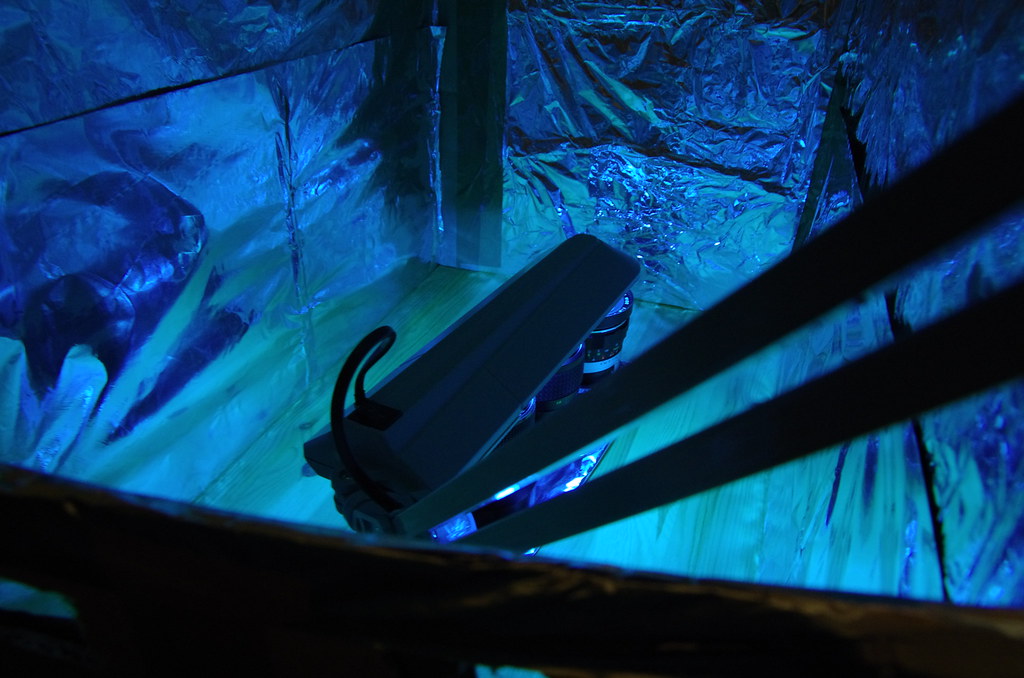
Directly exposing the yellowed element would probably work much quicker and these UV-C lamps are fairly cheap:
https://www.amazon.com/Philips-325126-9-watt-Germicidal-2-Pin/dp/B00172Y0H4
_________________
Sony: A7 | Samyang FE 35/2.8 | Sony FE 85/1.8
Pentax: K-5 | K28/3.5 | M50/1.7 | DA18-135/3.5-5.6 | F35-70/3.5-4.5
Minolta: X-500 | XD | MD35/2.8 | MC50/1.4 | MD200/4 | MD75-150/4
Canon: nFD24/2.8 | nFD35/2 | nFD50/1.4 | nFD300/5.6 | nFD35-105/3.5
Last edited by Boris_Akunin on Thu Oct 27, 2016 4:02 pm; edited 1 time in total |
|
| Back to top |
|
 |
devinw


Joined: 19 Aug 2016
Posts: 207
Location: Portland, OR
|
 Posted: Thu Oct 27, 2016 3:57 pm Post subject: Posted: Thu Oct 27, 2016 3:57 pm Post subject: |
 |
|
devinw wrote:
That's interesting, Boris.. I think we have the "standard filter" in there which is ~350-500, but I'll go check. If that's the case, it sounds like I could have benefited from a bit deeper UV (lower wavelength). 
_________________
Camera: Sony a6300
E-Mount: Zeiss/Sony 16-70 f/4, Samyang 12mm f/2
Rokkor: MD PG 50mm f1.4, MD 100mm Macro f3.5, MD 135mm f2.8, MD Zoom 35-70mm f3.5, MD Zoom 75-150 f4
Canon FD: nFD 50mm f1.4, Tokina AT-X 100-300mm f4
My Flickr: https://www.flickr.com/photos/westonde/
|
|
| Back to top |
|
 |
Teemō

Joined: 07 Apr 2016
Posts: 586
Location: Australia
|
 Posted: Sat Oct 29, 2016 5:10 pm Post subject: Posted: Sat Oct 29, 2016 5:10 pm Post subject: |
 |
|
Teemō wrote:
| devinw wrote: |
| Teemō wrote: |
| It does appear to be the glass that yellows rather than the cement, though I believe both can occur. I don't believe the mechanism for the yellowing is specifically understood, but supposedly caused by disruption of chemical bonds (between the different materials in the glass?) as a result of gamma ray emission and decay of the radioactive products within the glass. |
Yeah, I definitely agree the mechanism is in the glass, since I was able to "undo" most of it with the UV high power light. Adhesives do not behave this way. I am glad I caught the process of the doublet cement beginning to fail at the edges though. It would appear that with too much high power UV, it will start to break down. |
Wouldn't the cement be UV-cured. I didn't know that would break-down with too much intense exposure to UV. |
|
| Back to top |
|
 |
devinw


Joined: 19 Aug 2016
Posts: 207
Location: Portland, OR
|
 Posted: Tue Nov 01, 2016 1:07 am Post subject: Posted: Tue Nov 01, 2016 1:07 am Post subject: |
 |
|
devinw wrote:
| Teemō wrote: |
| devinw wrote: |
| Teemō wrote: |
| It does appear to be the glass that yellows rather than the cement, though I believe both can occur. I don't believe the mechanism for the yellowing is specifically understood, but supposedly caused by disruption of chemical bonds (between the different materials in the glass?) as a result of gamma ray emission and decay of the radioactive products within the glass. |
Yeah, I definitely agree the mechanism is in the glass, since I was able to "undo" most of it with the UV high power light. Adhesives do not behave this way. I am glad I caught the process of the doublet cement beginning to fail at the edges though. It would appear that with too much high power UV, it will start to break down. |
Wouldn't the cement be UV-cured. I didn't know that would break-down with too much intense exposure to UV. |
I'm not sure how they were doing that in the late 60s. Today, certainly some of the UV cure adhesives such as ones from Norland and Dymax are used to bond doublets. They could have used a 2-part or something different back then. It's hard to say. It's also hard to say if it may have changed composition slightly over time, but I'm no chemist  . .
_________________
Camera: Sony a6300
E-Mount: Zeiss/Sony 16-70 f/4, Samyang 12mm f/2
Rokkor: MD PG 50mm f1.4, MD 100mm Macro f3.5, MD 135mm f2.8, MD Zoom 35-70mm f3.5, MD Zoom 75-150 f4
Canon FD: nFD 50mm f1.4, Tokina AT-X 100-300mm f4
My Flickr: https://www.flickr.com/photos/westonde/
|
|
| Back to top |
|
 |
Teemō

Joined: 07 Apr 2016
Posts: 586
Location: Australia
|
 Posted: Tue Nov 01, 2016 5:58 pm Post subject: Posted: Tue Nov 01, 2016 5:58 pm Post subject: |
 |
|
Teemō wrote:
| devinw wrote: |
| Teemō wrote: |
| devinw wrote: |
| Teemō wrote: |
| It does appear to be the glass that yellows rather than the cement, though I believe both can occur. I don't believe the mechanism for the yellowing is specifically understood, but supposedly caused by disruption of chemical bonds (between the different materials in the glass?) as a result of gamma ray emission and decay of the radioactive products within the glass. |
Yeah, I definitely agree the mechanism is in the glass, since I was able to "undo" most of it with the UV high power light. Adhesives do not behave this way. I am glad I caught the process of the doublet cement beginning to fail at the edges though. It would appear that with too much high power UV, it will start to break down. |
Wouldn't the cement be UV-cured. I didn't know that would break-down with too much intense exposure to UV. |
I'm not sure how they were doing that in the late 60s. Today, certainly some of the UV cure adhesives such as ones from Norland and Dymax are used to bond doublets. They could have used a 2-part or something different back then. It's hard to say. It's also hard to say if it may have changed composition slightly over time, but I'm no chemist  . . |
Ah of course! I wasn't even thinking about whether they had UV-resin in the 60's... I think the most common stuff was Canada Balsalm? It's apparently quite brittle and even solved by lens greases and oils that leak from the other mechanisms. It also happens to be amber-coloured when solid and yellow as liquid! Perhaps intense light (radiation) does break the stuff down on a chemical level. |
|
| Back to top |
|
 |
devinw


Joined: 19 Aug 2016
Posts: 207
Location: Portland, OR
|
 Posted: Tue Nov 01, 2016 6:16 pm Post subject: Posted: Tue Nov 01, 2016 6:16 pm Post subject: |
 |
|
devinw wrote:
Yeah, that Canada balsam is fully organic, so I could definitely see that getting screwed up by things especially like lubricants which may have petroleum products. It would be interesting to find out what they were actually doing back then.
Another interesting thing I noticed is that several of the lenses have a black coating on the outer diameter, presumably for scatter resistance? Whatever it is, it was not in great shape after 50 years. It didn't come off but was definitely quite soluble to the Methanol I was using to clean the lenses. Care had to be taken near the edges.
_________________
Camera: Sony a6300
E-Mount: Zeiss/Sony 16-70 f/4, Samyang 12mm f/2
Rokkor: MD PG 50mm f1.4, MD 100mm Macro f3.5, MD 135mm f2.8, MD Zoom 35-70mm f3.5, MD Zoom 75-150 f4
Canon FD: nFD 50mm f1.4, Tokina AT-X 100-300mm f4
My Flickr: https://www.flickr.com/photos/westonde/
|
|
| Back to top |
|
 |
Lightshow


Joined: 04 Nov 2011
Posts: 3669
Location: Calgary
|
 Posted: Wed Nov 02, 2016 5:08 am Post subject: Posted: Wed Nov 02, 2016 5:08 am Post subject: |
 |
|
Lightshow wrote:
The black paint(?) reduces unwanted internal reflections and scattering and helps increase contrast.
_________________
A Manual Focus Junky...
One photographers junk lens is an artists favorite tool.
My lens list
http://www.flickr.com/photos/lightshow-photography/ |
|
| Back to top |
|
 |
Boris_Akunin


Joined: 22 Aug 2013
Posts: 393
Location: Bremen, Germany
|
 Posted: Wed Nov 02, 2016 5:43 am Post subject: Posted: Wed Nov 02, 2016 5:43 am Post subject: |
 |
|
Boris_Akunin wrote:
| Lightshow wrote: |
| The black paint(?) reduces unwanted internal reflections and scattering and helps increase contrast. |
That might be another concern for UV treatment, the UV-C light has bleached the finish on my MC28/2.5 quite a bit, it might also damage the black paint inside the lens (though most of the UV would be blocked by the glass).
Before:

After 3 weeks of UV-C (>130W/m�):

I think this bleaching is only caused by UV-C, natural sunlight has less than 1W/m� (vs ~80W/m� UV-A and ~4W/m� UV-B) so the three weeks under a UV-C lamp are equivalent to several years of direct sunlight.
I've seen this kind of bleaching on other lenses (my MD 35/1.8 seems to have spent some time under the sun...) but never this severe.
_________________
Sony: A7 | Samyang FE 35/2.8 | Sony FE 85/1.8
Pentax: K-5 | K28/3.5 | M50/1.7 | DA18-135/3.5-5.6 | F35-70/3.5-4.5
Minolta: X-500 | XD | MD35/2.8 | MC50/1.4 | MD200/4 | MD75-150/4
Canon: nFD24/2.8 | nFD35/2 | nFD50/1.4 | nFD300/5.6 | nFD35-105/3.5
|
|
| Back to top |
|
 |
Teemō

Joined: 07 Apr 2016
Posts: 586
Location: Australia
|
 Posted: Wed Nov 02, 2016 9:36 am Post subject: Posted: Wed Nov 02, 2016 9:36 am Post subject: |
 |
|
Teemō wrote:
That's really interesting. Did it affect the 28mm F2, on the inside? |
|
| Back to top |
|
 |
Boris_Akunin


Joined: 22 Aug 2013
Posts: 393
Location: Bremen, Germany
|
 Posted: Wed Nov 02, 2016 10:46 am Post subject: Posted: Wed Nov 02, 2016 10:46 am Post subject: |
 |
|
Boris_Akunin wrote:
| Teemō wrote: |
| Did it affect the 28mm F2, on the inside? |
What? No. Only the 28/2.5 got the UV treatment, the 28/2 is only there for comparison (because the before and after pics aren't shot under the same light).
_________________
Sony: A7 | Samyang FE 35/2.8 | Sony FE 85/1.8
Pentax: K-5 | K28/3.5 | M50/1.7 | DA18-135/3.5-5.6 | F35-70/3.5-4.5
Minolta: X-500 | XD | MD35/2.8 | MC50/1.4 | MD200/4 | MD75-150/4
Canon: nFD24/2.8 | nFD35/2 | nFD50/1.4 | nFD300/5.6 | nFD35-105/3.5
|
|
| Back to top |
|
 |
Teemō

Joined: 07 Apr 2016
Posts: 586
Location: Australia
|
 Posted: Wed Nov 02, 2016 2:44 pm Post subject: Posted: Wed Nov 02, 2016 2:44 pm Post subject: |
 |
|
Teemō wrote:
| Boris_Akunin wrote: |
| Teemō wrote: |
| Did it affect the 28mm F2, on the inside? |
What? No. Only the 28/2.5 got the UV treatment, the 28/2 is only there for comparison (because the before and after pics aren't shot under the same light). |
Ah okay. I wonder what those parts were painted with compared to the rest of the lens. Do you think it's oxidisation? |
|
| Back to top |
|
 |
Lightshow


Joined: 04 Nov 2011
Posts: 3669
Location: Calgary
|
 Posted: Wed Nov 02, 2016 3:02 pm Post subject: Posted: Wed Nov 02, 2016 3:02 pm Post subject: |
 |
|
Lightshow wrote:
Plastic and paint can be damaged by UV, so I would recommend that you protect what you can from exposure, ideally removing the effected element(s) and treating them away from the rest of the lens.
_________________
A Manual Focus Junky...
One photographers junk lens is an artists favorite tool.
My lens list
http://www.flickr.com/photos/lightshow-photography/ |
|
| Back to top |
|
 |
devinw


Joined: 19 Aug 2016
Posts: 207
Location: Portland, OR
|
 Posted: Wed Nov 02, 2016 4:52 pm Post subject: Posted: Wed Nov 02, 2016 4:52 pm Post subject: |
 |
|
devinw wrote:
I would guess actually the metal outer parts are black anodized aluminum. Bleaching of the organic dies is very common due to laser light of certain wavelengths or UV light. There are a couple of places that do a special "optical black" anodize in the US, but it's a niche market.
I have parts laying around here at work which were exposed to only years of red (640nm) laser light and even those have turned a beautiful "copper" color, but were black to begin with. I also have some which have had the anodize bleach all the way to silver just like Boris' pictures.
_________________
Camera: Sony a6300
E-Mount: Zeiss/Sony 16-70 f/4, Samyang 12mm f/2
Rokkor: MD PG 50mm f1.4, MD 100mm Macro f3.5, MD 135mm f2.8, MD Zoom 35-70mm f3.5, MD Zoom 75-150 f4
Canon FD: nFD 50mm f1.4, Tokina AT-X 100-300mm f4
My Flickr: https://www.flickr.com/photos/westonde/
|
|
| Back to top |
|
 |
Teemō

Joined: 07 Apr 2016
Posts: 586
Location: Australia
|
 Posted: Thu Nov 03, 2016 6:45 am Post subject: Posted: Thu Nov 03, 2016 6:45 am Post subject: |
 |
|
Teemō wrote:
| devinw wrote: |
I would guess actually the metal outer parts are black anodized aluminum. Bleaching of the organic dies is very common due to laser light of certain wavelengths or UV light. There are a couple of places that do a special "optical black" anodize in the US, but it's a niche market.
I have parts laying around here at work which were exposed to only years of red (640nm) laser light and even those have turned a beautiful "copper" color, but were black to begin with. I also have some which have had the anodize bleach all the way to silver just like Boris' pictures. |
Interesting, thanks. |
|
| Back to top |
|
 |
RichA


Joined: 17 Feb 2011
Posts: 55
|
 Posted: Sun Nov 06, 2016 11:06 pm Post subject: Posted: Sun Nov 06, 2016 11:06 pm Post subject: |
 |
|
RichA wrote:
| Teemō wrote: |
| It does appear to be the glass that yellows rather than the cement, though I believe both can occur. I don't believe the mechanism for the yellowing is specifically understood, but supposedly caused by disruption of chemical bonds (between the different materials in the glass?) as a result of gamma ray emission and decay of the radioactive products within the glass. |
The element is Thorium (not really doped but made a part of one element). Some lenses had 40% thorium oxide make-ups, like Kodak Ektars. The thorium has a 14 billion year half-life so the poster will have to do the UV thing every 20 years for the foreseeable future  |
|
| Back to top |
|
 |
Lightshow


Joined: 04 Nov 2011
Posts: 3669
Location: Calgary
|
 Posted: Tue Nov 08, 2016 8:46 am Post subject: Posted: Tue Nov 08, 2016 8:46 am Post subject: |
 |
|
Lightshow wrote:
| RichA wrote: |
| Teemō wrote: |
| It does appear to be the glass that yellows rather than the cement, though I believe both can occur. I don't believe the mechanism for the yellowing is specifically understood, but supposedly caused by disruption of chemical bonds (between the different materials in the glass?) as a result of gamma ray emission and decay of the radioactive products within the glass. |
The element is Thorium (not really doped but made a part of one element). Some lenses had 40% thorium oxide make-ups, like Kodak Ektars. The thorium has a 14 billion year half-life so the poster will have to do the UV thing every 20 years for the foreseeable future  |
Actually, you only need to keep using the lens and not store it or long periods.
_________________
A Manual Focus Junky...
One photographers junk lens is an artists favorite tool.
My lens list
http://www.flickr.com/photos/lightshow-photography/ |
|
| Back to top |
|
 |
Kira
Joined: 26 Apr 2017
Posts: 3
|
 Posted: Wed Apr 26, 2017 8:53 pm Post subject: Re: MC Rokkor-SI 28mm f/2.5 "radioactive" repair a Posted: Wed Apr 26, 2017 8:53 pm Post subject: Re: MC Rokkor-SI 28mm f/2.5 "radioactive" repair a |
 |
|
Kira wrote:
Hi to everyone,
Well done Dewinw. That's a very nice job.
I have the same issue with the same lens. I started to disassemble it but I am stuck with the inner cell.
| devinw wrote: |
This inner lens cell contains 2 elements. 1 is removeable, the other appears to have the retaining ring potted in place :
|
Can you tell me please how exactly did you remove the inner cell first element? |
|
| Back to top |
|
 |
devinw


Joined: 19 Aug 2016
Posts: 207
Location: Portland, OR
|
 Posted: Wed Apr 26, 2017 8:59 pm Post subject: Re: MC Rokkor-SI 28mm f/2.5 "radioactive" repair a Posted: Wed Apr 26, 2017 8:59 pm Post subject: Re: MC Rokkor-SI 28mm f/2.5 "radioactive" repair a |
 |
|
devinw wrote:
| Kira wrote: |
Hi to everyone,
Well done Dewinw. That's a very nice job.
I have the same issue with the same lens. I started to disassemble it but I am stuck with the inner cell.
| devinw wrote: |
This inner lens cell contains 2 elements. 1 is removeable, the other appears to have the retaining ring potted in place :
|
Can you tell me please how exactly did you remove the inner cell first element? |
I used a ThorLabs adjustable spanner wrench for all the retaining rings:
https://www.thorlabs.com/thorproduct.cfm?partnumber=SPW801
_________________
Camera: Sony a6300
E-Mount: Zeiss/Sony 16-70 f/4, Samyang 12mm f/2
Rokkor: MD PG 50mm f1.4, MD 100mm Macro f3.5, MD 135mm f2.8, MD Zoom 35-70mm f3.5, MD Zoom 75-150 f4
Canon FD: nFD 50mm f1.4, Tokina AT-X 100-300mm f4
My Flickr: https://www.flickr.com/photos/westonde/
|
|
| Back to top |
|
 |
|
|
